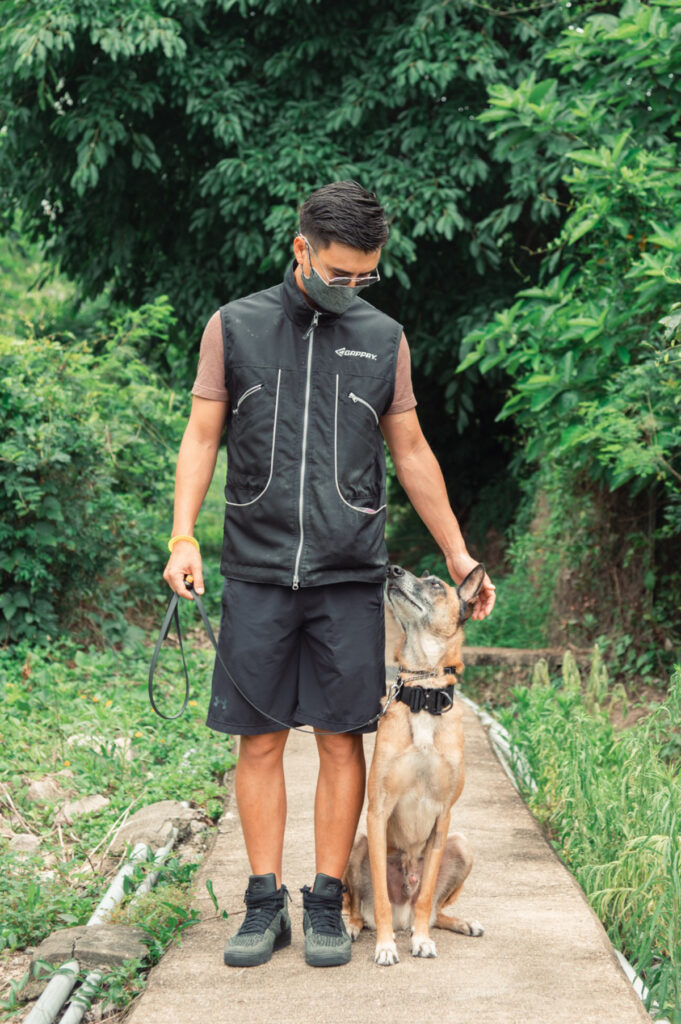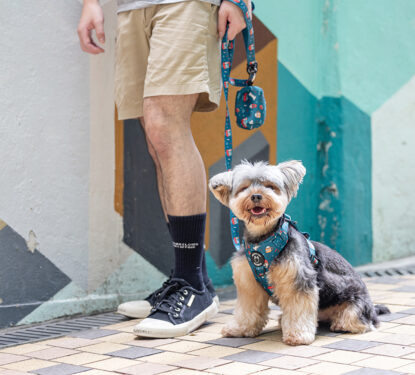
Are you walking your dog, or is your dog walking you? Our canine companions need multiple exercise breaks every day, which means it’s crucial to get them to behave on dog walks and leash-training when we’re out and about. We speak to Sebe Dalrem, dog trainer and the founder of Project Obedience, for his advice on dog-walking and how to perfect your pup’s leash manners.
A loose leash
Novice dog owners might think that a sturdy harness is the safest tool, but according to Dalrem, you’re setting yourself up for an endless tug-of-war. “When a dog pulls against you in a harness, it creates what we call an opposition reflex, in which the animal finds reward through pulling, and is motivated to pull harder against you,” he says.
Stick with a simple collar and leash setup – so long as they can’t slip it off their heads. “It’s kinder to the dog to teach them to walk on a loose leash with soft hands, rather than a harness where you have to continually pull and yank to keep the dog with you,” he adds.
Start with boring walks

Dalrem recommends a combination of leash- training, counter-conditioning and desensitisation. “In order to get a dog walking on a leash nicely, first you need to teach them that not pulling is the more rewarding behaviour,” he says. Start by walking your dog in a relatively unstimulating environment, such as a carpark, an alleyway, or even in your home, showering your dog with positive enforcement, like praise and food, any time they display the behaviour you want. “Then, you can practice starting, stopping and changing direction to make sure they’re paying attention to you,” he adds.
Slowly build up to bigger adventures
“You need to gradually build up your dog’s tolerance for stimuli. For example, if they’re afraid of traffic, don’t go straight out and put them behind a motorbike,” Dalrem says. “Find somewhere that they can observe cars from a safe distance, far from triggering sounds and smells. Once they’ve built up a level of acceptance, you can get a little closer in stages until they’re walking safely on a busy street,” he adds.
Make sure they come back to you

Most importantly, make sure your dog is listening to you. In dog-training circles this is known as recall: the ability to bring your dog back and give you its attention, no matter what it was doing before. “Engagement training is really the basis of obedience training. It’s defined by your dog’s ability to focus on the handler and tune out distractions,” he says. “As dog owners, it is our responsibility to educate ourselves and equip ourselves with the tools to handle our dogs safely.”
Learn more about Project Obedience at projectobedience.com
Also on Liv: Why Alternative Pet Wellness is Trending in Hong Kong





